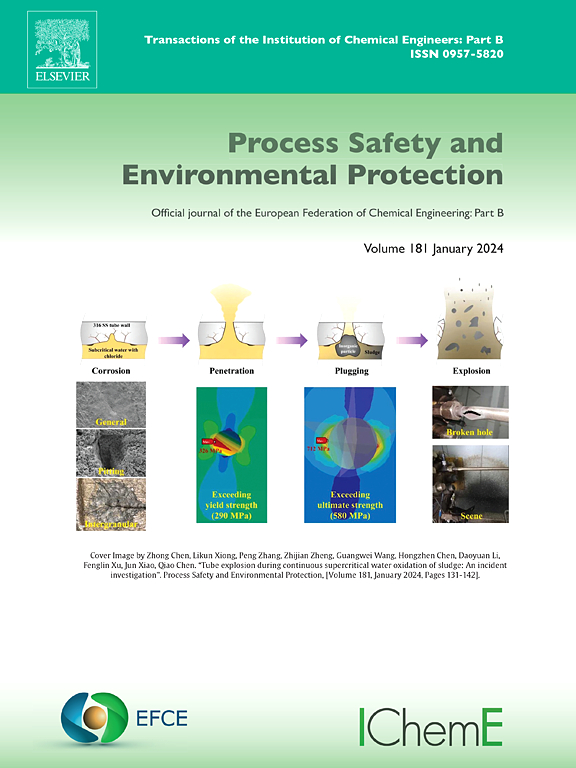A novel separation process for the bromide and carbonate from the air blow-out alkali absorbed liquid and its phase equilibrium
IF 6.9
2区 环境科学与生态学
Q1 ENGINEERING, CHEMICAL
引用次数: 0
Abstract
Efficiently separating bromide/carbonate-enriched liquids obtained from air-blown alkali absorption systems through sustainable and clean methods remains a persistent engineering challenge. In this paper, to realize the utilization of the absorbed liquid, the equilibria data about the absorbed liquid of the ternary system (NaBr - Na从吹出碱吸收液中分离溴化物和碳酸盐的新工艺及其相平衡
通过可持续和清洁的方法有效分离从气吹碱吸收系统中获得的溴化物/碳酸盐富集液体仍然是一个持续的工程挑战。为了实现吸收液的利用,本文采用等温溶解平衡法和湿渣固相法测定了三元体系(NaBr - Na2CO3 - H2O)在328.15、338.15和368.15K和101.325 kPa下的吸收液平衡数据。比较了不同温度下三元体系(NaBr - Na2CO3 - H2O)的相图,分析了结晶区和溶解度的变化规律。此外,本工作还提出了一种从吸收液中分离和回收高纯度Na2CO3·H2O和NaBr·2H2O的新方法。通过单向分离实验验证了该分离路线的可行性,获得了纯度分别为99.10%和99.50%的Na2CO3·H2O和NaBr·2H2O,最终Na2CO3和NaBr的回收率均为100%。此外,还对该分离工艺的能耗和经济可行性进行了分析。该分离工艺对吸收液的利用起着至关重要的作用,可应用于含溴化钠和碳酸钠的废水处理。
本文章由计算机程序翻译,如有差异,请以英文原文为准。
求助全文
约1分钟内获得全文
求助全文
来源期刊

Process Safety and Environmental Protection
环境科学-工程:化工
CiteScore
11.40
自引率
15.40%
发文量
929
审稿时长
8.0 months
期刊介绍:
The Process Safety and Environmental Protection (PSEP) journal is a leading international publication that focuses on the publication of high-quality, original research papers in the field of engineering, specifically those related to the safety of industrial processes and environmental protection. The journal encourages submissions that present new developments in safety and environmental aspects, particularly those that show how research findings can be applied in process engineering design and practice.
PSEP is particularly interested in research that brings fresh perspectives to established engineering principles, identifies unsolved problems, or suggests directions for future research. The journal also values contributions that push the boundaries of traditional engineering and welcomes multidisciplinary papers.
PSEP's articles are abstracted and indexed by a range of databases and services, which helps to ensure that the journal's research is accessible and recognized in the academic and professional communities. These databases include ANTE, Chemical Abstracts, Chemical Hazards in Industry, Current Contents, Elsevier Engineering Information database, Pascal Francis, Web of Science, Scopus, Engineering Information Database EnCompass LIT (Elsevier), and INSPEC. This wide coverage facilitates the dissemination of the journal's content to a global audience interested in process safety and environmental engineering.
 求助内容:
求助内容: 应助结果提醒方式:
应助结果提醒方式:


